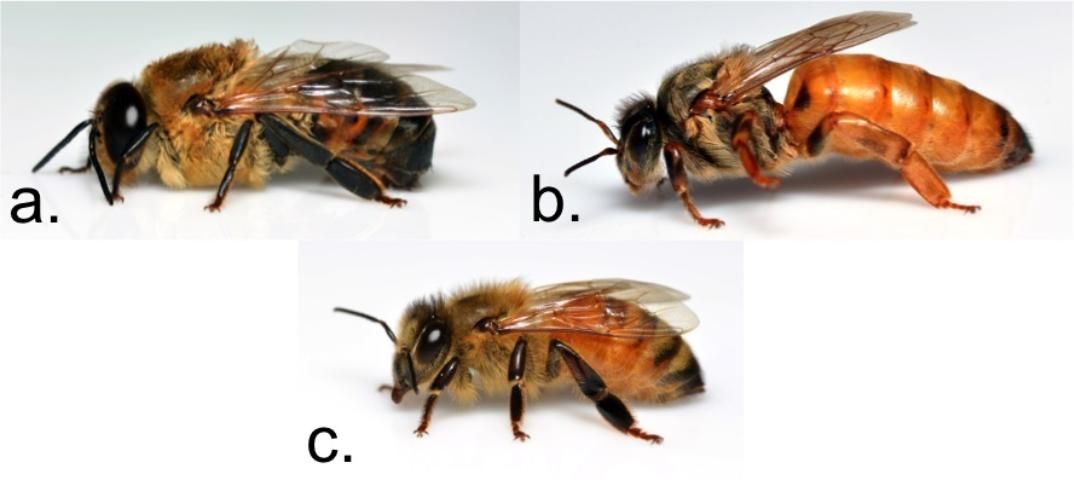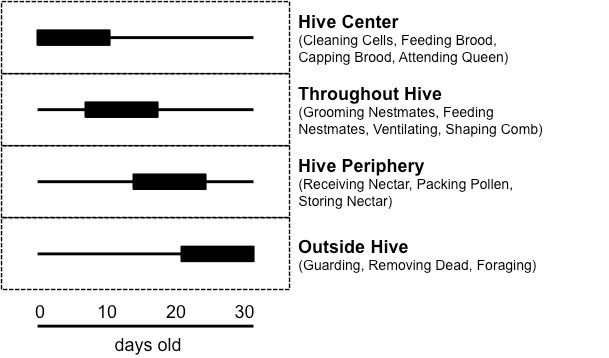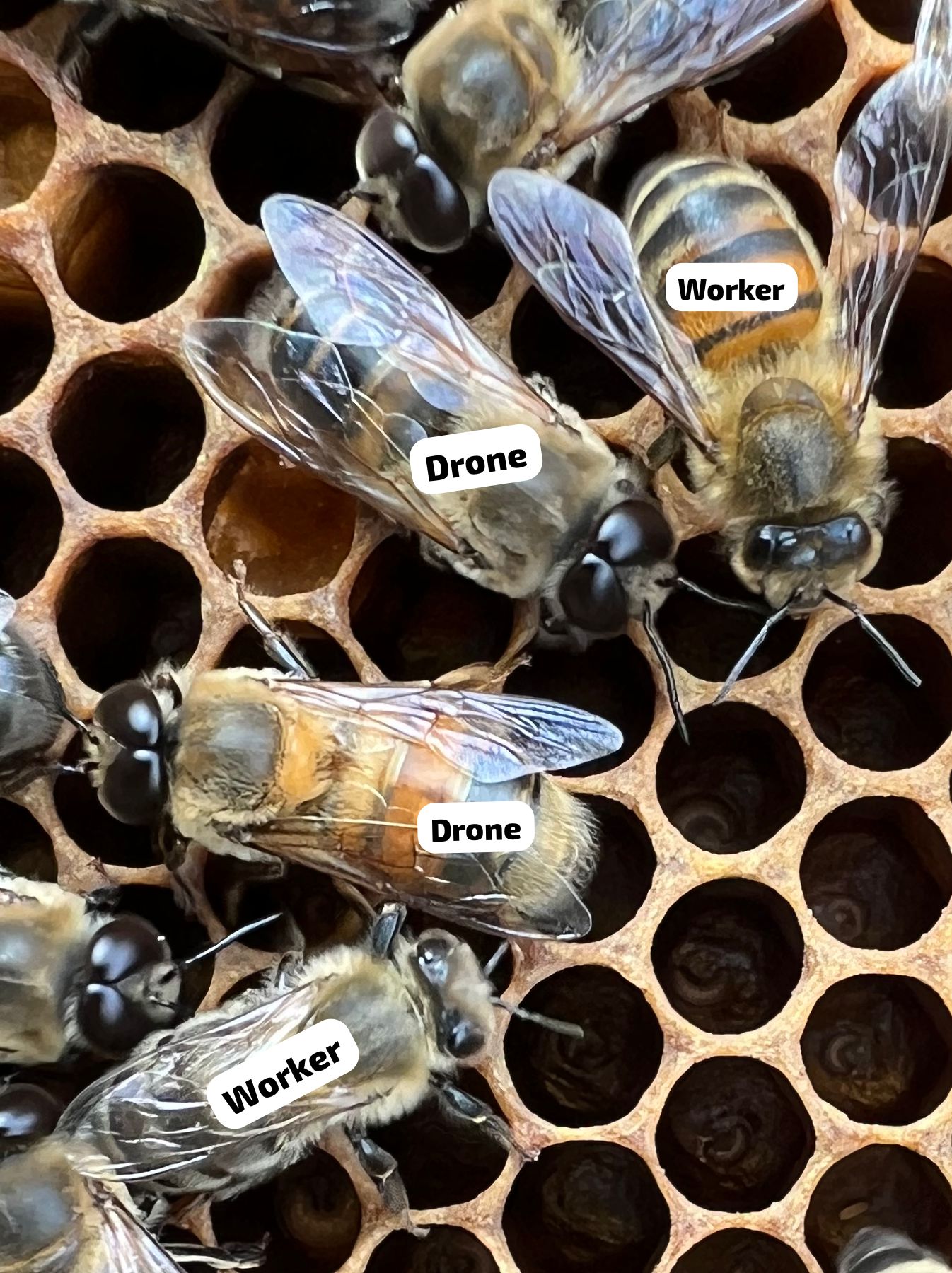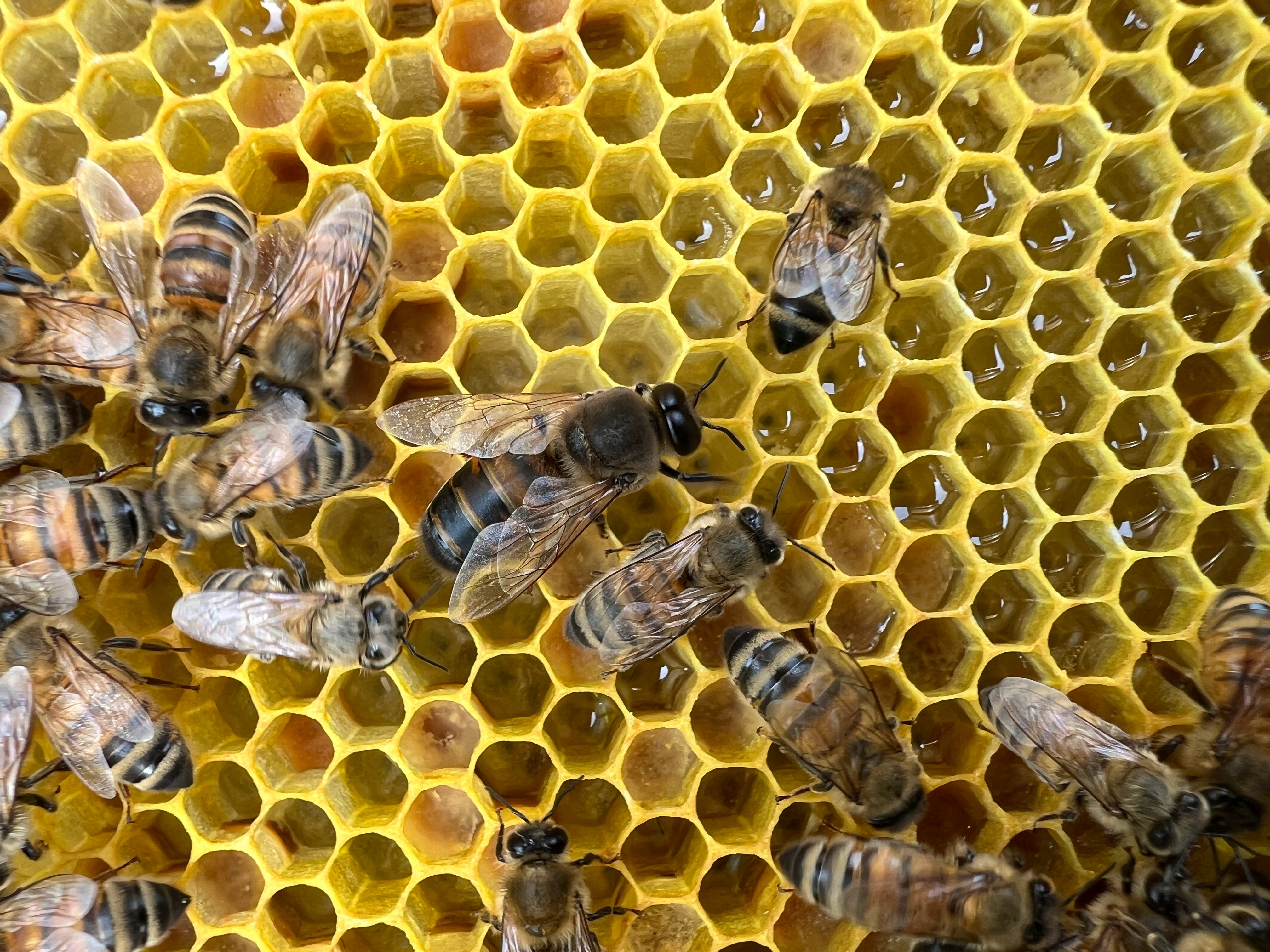r/Beekeeping Wiki
Castes
Castes:
Here is a good definition of Castes from The ABC & XYZ of Bee Culture:
A caste refers to a group of individuals of the same sex that behave similarly to each other but differently from other members of their sex. Essentially, all workers act like every other worker, and all workers behave differently than the queen. The definition continues to say:
Since both types are of the same sex, it means workers and queens are two different castes of female… Behavioral differences among castes are usually accompanied by specific differences in morphology and /or physiology.
This is so, as the queen is physically different from the workers and fills an entirely different role in the colony.
The Beekeeper’s Handbook by Diana Sammataro and Alphonse Avitabile defines caste similarly.
Caste: The two types of female bees: workers and queens. Drones are male bees and are therefore not a caste.*
Now that we’ve got the definition down and know that drones aren’t a caste, we’re going to include them here for convenice sake.

a. Drone, b. Queen, c. Worker
The Queen
The queen bee is the only female in the colony fully capable of reproduction. She is the mother of all of the bees in the hive and can lay up to 2,000 eggs per day. She looks similar to the workers: her head and thorax are similar in size to those of the worker, however, the queen has a longer and plumper abdomen. Queens are unable to care for themselves and are unable to fly when gravid. Attendant bees care for the queen. They feed her, clean her and inform the rest of the colony of her health using pheromones. It takes a queen 16 days to develop from an egg to an adult. Within a week after emerging, a virgin queen will take a mating flight, mating with up to 14 drones. She stores the sperm from the drones and uses it to fertileize her eggs for the rest of her life. Queens typically live about three years.
The Workers
Worker bees make up most of the population in a colony. They are responsible for collecting nectar, pollen and water, cleaning and protecting the hive, raising larvae, making wax and building comb, and caring for the queen. Additionally, worker bees also make the decision whether to relocate the colony through swarming. Different cohorts of worker bees have different duties in the hive. Nurse bees are in charge of caring for the larvae and cleaning the hive, foragers collect water, nectar, pollen, and propolis. Guard bees defend the hive entrance from intruders, and soldiers will pursue threats to drive them away from the hive. Rather than specializing in only one job, each worker progresses through tasks in predictable order based on age. This progression is called temporal (or age) polyethism.
As with all bees, worker eggs hatch into larvae. They are unable to feed themselves, so nurse bees feed the larvae a liquid called “worker jelly”. Larvae eat as often as 800 times a day to build up fat stores. Eight to nine days later, the larvae spin cocoons and enter the pupal stage. Twenty days after their cell is capped, the new adult worker bees chew through their cocoons. Within a few hours they begin their work, starting with cleaning the cell they emerged from.
Temporal Polyethism
The age related division of labor that occurs within honey bee colonies is called temporal polyethism. At different ages, worker bees are better suited to perform different tasks. Each worker performs tasks for the colony in a predictable progression throughout her lifetime. Workers don’t specialize in a single task.

Young workers genrally perform jobs in the area of the hive where the brood is found. Young workers’ jobs include cleaning brood cells, feeding and tending the brood, and tending to the queen. As they age, the workers take on duties in the outer regions of the hive. These jobs include building comb, receiving nectar and pollen, storing nectar and pollen, processing honey and ventilating the hive. The oldest bees perform tasks outside of the hive, such as guarding the hive, removing dead bees from the hive, and foraging.
Worker bees do not have fully functioning reproductive organs like the queen does, but in some cases, can lay eggs in the absence of the queen. This is called “laying worker syndrome”. Workers will only lay unfertilized eggs, so only drones will be produced in a laying worker hive.
The Drones
Drones are male honey bees. There is noticable sexual dimorphism in honey bees: the drones are much larger than the workers and have very large eyes. Their abdomens are thick and blunt at the end rather than pointy like the abdomens of the females. A drone’s sole purpose is to mate with a queen not from its hive. Drones will leave the hive each day in search of a queen to mate with. They will travel up to 3 miles to “drone congregation sites”: a location that drones from multiple colonies will come together in search of a queen. If the drones mating attempt is unsuccessful, they return to their hives to return the next day. If a drone successfully mates with a queen, they die because the penis and associated abdominal tissues are torn from the drone’s body following sexual intercourse. Drones take 24 days to grow from egg to adult and can live for 3 months. In the autumn, worker bees prevent drones from reentering the hive since they are no longer needed, effectively starving them to death.

 Image: Drones stood next to workers for size comparison. Thanks for the pose, Dave.
Image: Drones stood next to workers for size comparison. Thanks for the pose, Dave.